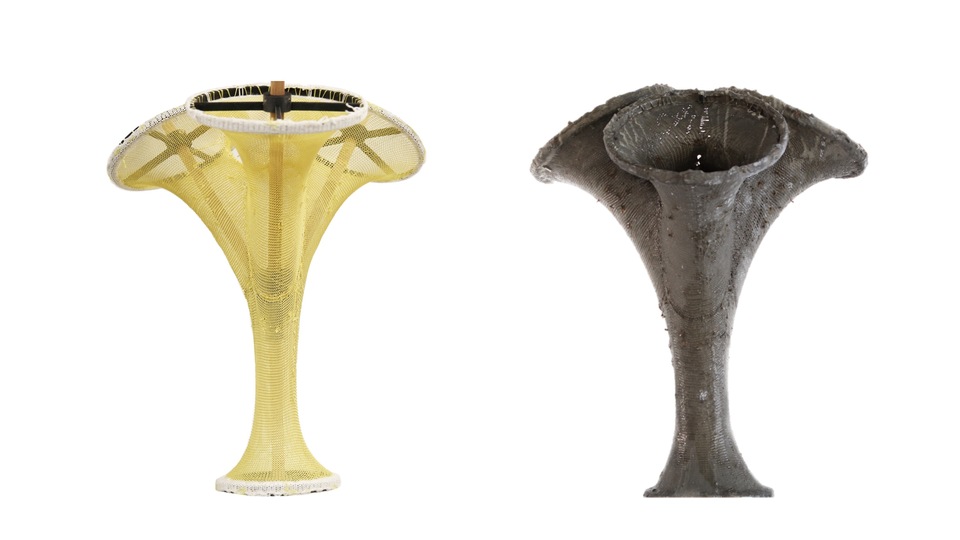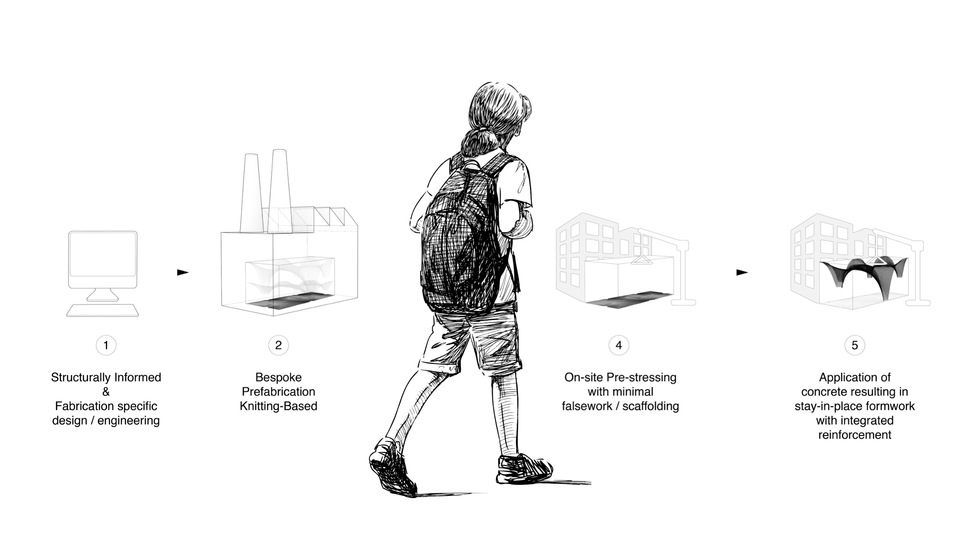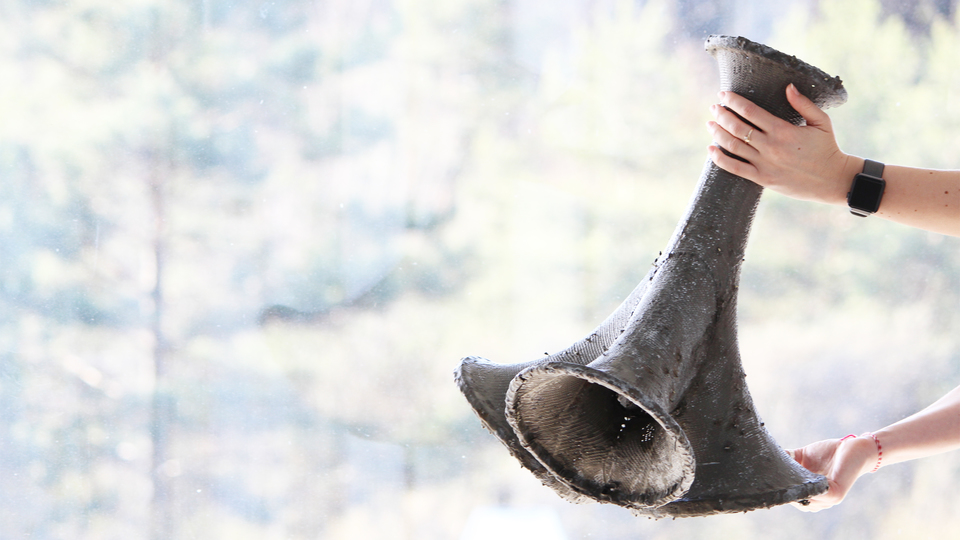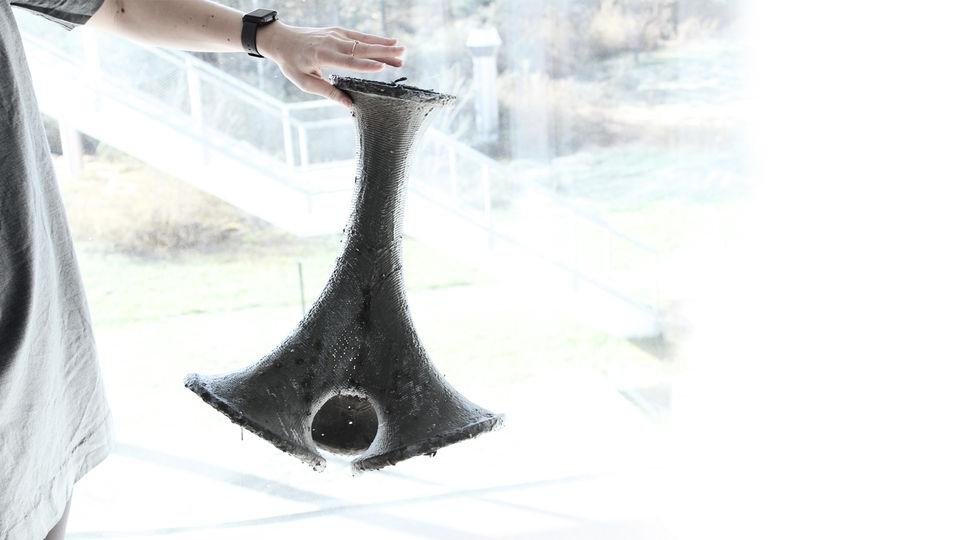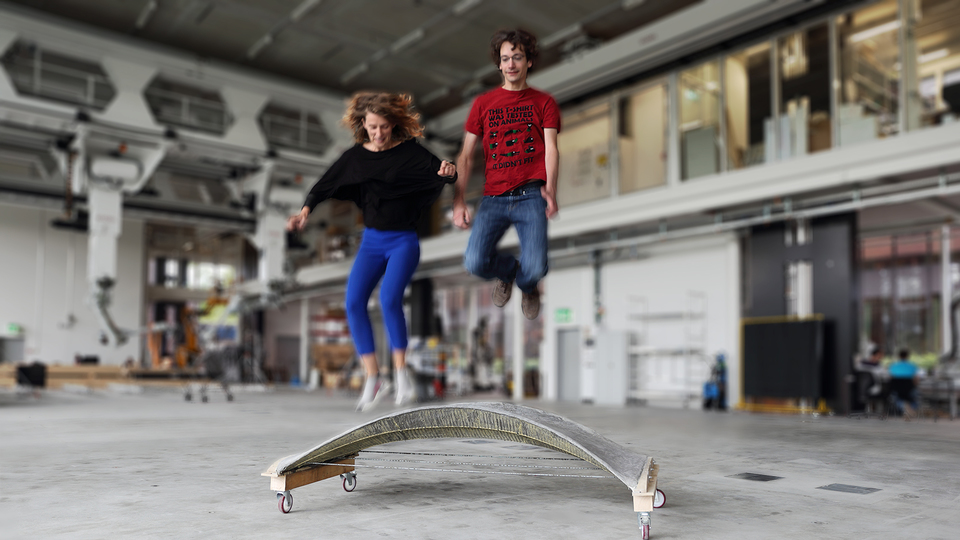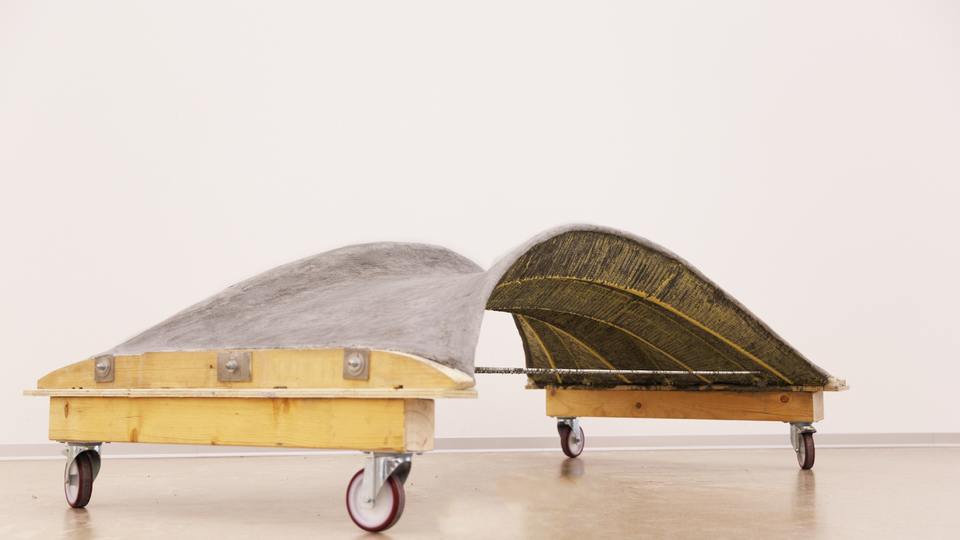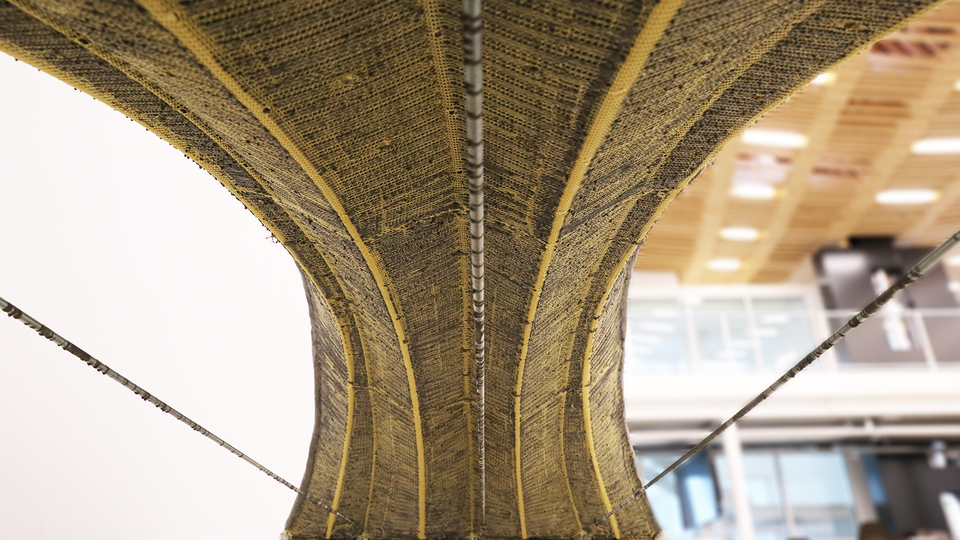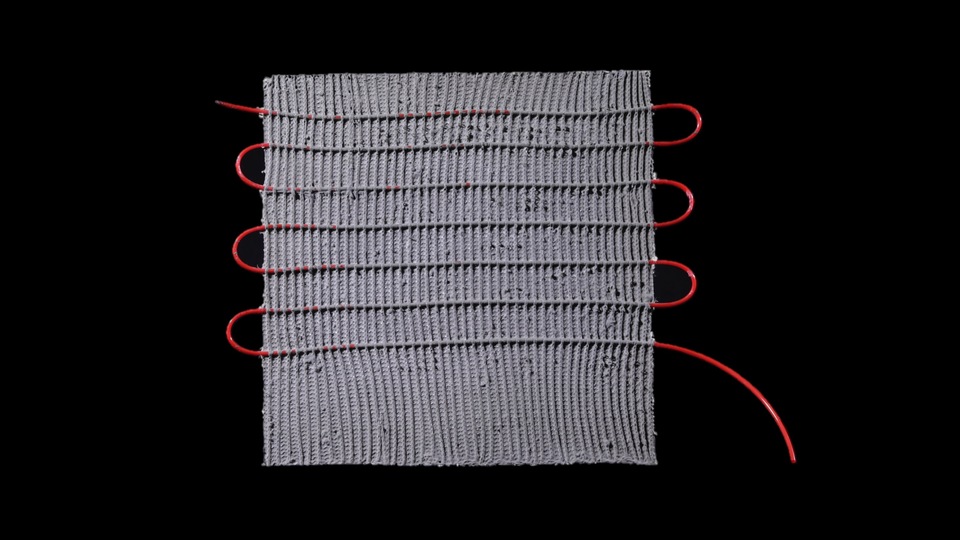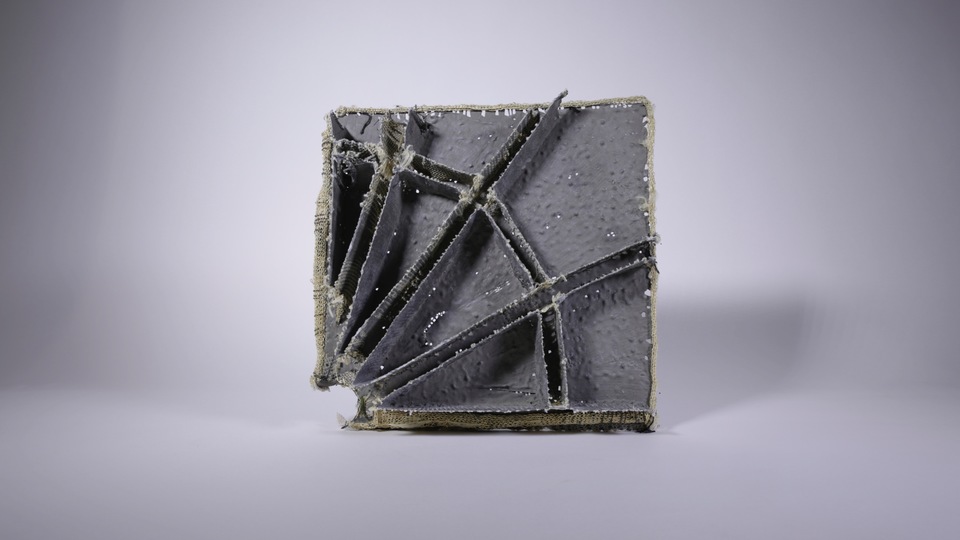More info
Concrete is one of the predominant building materials in construction. This applies not only to standard construction but especially to complex architectural shapes. Reinforced concrete lends itself well to such geometries since concrete can take on almost any desired shape when given a formwork. This formal flexibility makes it an attractive building material, but such flexibility comes at a cost, namely, the needed formwork to cast it upon. Currently, prefabrication is an optimised process that relies on standardisation and serialisation linked to the reusability of the formwork needed for casting. For bespoke geometries, the formwork can usually not be reused. These one-off products often account for a large percentage of the total building cost. Furthermore, much of the time spent on design and manufacturing shifts to the production of the complex formwork. This is a problem both in terms of cost and sustainability. Additionally, nonstandard reinforcement strategies have to be developed both for the formwork and the reinforcement of the structure itself.
This research focuses on those complex, bespoke geometries that need custom formwork with integrated solutions for the reinforcements. It develops a prefabricated, spatial, textile formwork system that:
-
is easy to transport and handle
-
acts as stay-in-place formwork
-
includes guiding features for reinforcements
-
has accurate placement of material
Waste-free, stay-in-place, self-supporting formwork
The approach combines 3D-knitted technical textiles with special cement paste coatings to create a lightweight stay-in-place formwork for concrete. This combination promises to provide a material-saving, labour-reducing and cost-effective solution for the construction of complex concrete structures. Customised textiles informed by structural considerations, among other parameters, can be easily fabricated and used with great geometrical freedom.
First, a custom knit pattern is algorithmically generated based on the desired 3D geometry. This pattern is then produced using an industrial knitting machine. The textile is tensioned into the desired shape, which can be done using rigid elements as an external frame or as part of the textile or flexible elements such as bending-active structures. After tensioning, a thin cement paste coating is applied. To obtain a low tensioning of the textile and also minimise deformations during casting without intermediate support from below, strength is built up by gradually applying thin layers of concrete. This package can now be used as formwork for casting concrete in a traditional fashion.
This textile-concrete hybrid results in an ultra-lightweight formwork that is easily transportable and significantly reduces the need for falsework, support and scaffolding, which also has many advantages on the construction site.
Bridge Prototype
We have tested the forming system through several small-scale prototypes. The approach has been applied to volumetric nodes and a concrete shell bridge. The small-scale bridge prototype demonstrator was built using a prestressed hybrid knitted-textile and bending-active structure that acted as a waste-free, stay-in-place, self-supporting formwork. The formwork becomes self-supporting by stiffening the textile with a specially formulated cement paste coating. The extremely lightweight textile weighed only approximately 440g, (around 900g together with the bending active glass fibre rods) and carried 15kg of wet cement-paste coating. The computational design and fabrication of the knitted textile formwork included integrated channels for the insertion of the bending-active rods, tensioning ribbons and features for controlling the thicknesses during concrete casting.
KnitCandela
KnitCandela is a thin sinuous shell demonstrating the feasibility of using weft knitted fabrics as stayinplace formwork for doublycurved concrete geometries at an architectural scale. The 50 m2 of textile shuttering of the formwork for KnitCandela is made up of four long strips ranging from 15 m to 26 m in length. Each of the four pieces is a seamless, double-layered textile produced in one go. The two layers of the textile fulfil different tasks. The visible inside is an aesthetic surface that displays a colourful pattern and reveals traces of the supporting cable-net falsework system. The backside fulfils technical needs by including features for inserting, guiding and controlling the position of additional formwork elements.
Knitting pattern generation
Knitted textiles offer extended advantages with respect to integrating features such as channels, openings, directional material properties, multi-layered formations and changes in surface texture, all in a single CNC fabrication process. This process requires a set of instructions called a knitting pattern.
In contrast to other industries where knitting is used for mass production (e.g. the garment and shoe industries, automotive industry, etc.), the construction sector has a greater demand for non-repetitive modules using bespoke geometries and at a significantly larger scale. The ability to create knitting patterns in a fast and flexible way for various 3D geometries is therefore especially important. We generate these instructions using in-house developed computational tools to create an accurate knitting pattern. The pattern generation algorithm (compas_knit) based on COMPAS is developed in Python 2.7 and uses Rhino3D as the interface.
The approach takes 3D geometry as input. Given a knitting direction and the intended loop parameters (width and height), courses and loops within the courses are generated as a directed graph on the geometry. The graph is predominantly quadrangular with triangular exceptions marking knitting operations such as increases or decreases.
This graph is then translated into a 2D pixel diagram where each pixel represents a working needle on the knitting machine. This pixel diagram can be imported into machine specific software where the final machining parameters can be adjusted and the code can be exported to the machine.
In development
Future explorations will focus on the tailoring of material properties, the production of spacer fabrics, rib-stiffeners, and the inclusion of inlaid elements as reinforcement or further functionalisation of the textileThe research is continued as a collaborative project within the NCCR Digital Fabrication in stream 1A - Lightweight Flexible Formworks. The focus lies on the further development of the system into an easily deployable process on site. The different collaborating disciplines tackle complex form-finding problems, prediction and control of flexible systems, bespoke reinforcement, concrete material development and efficient, automated strategies for casting.

